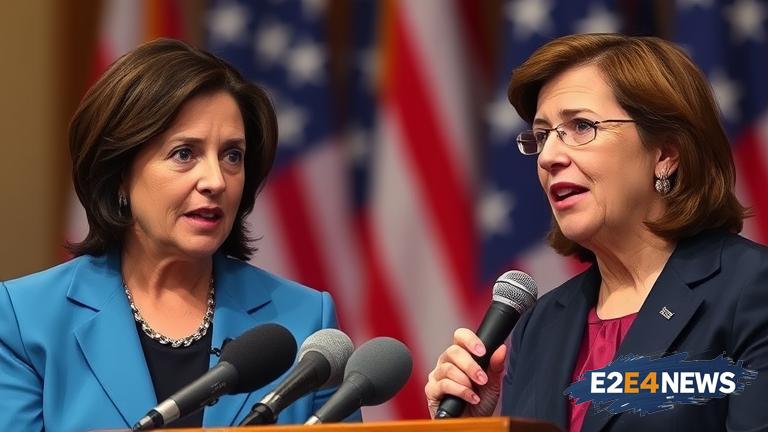Rep. Elise Stefanik, a prominent Republican from New York, has publicly denounced Governor Kathy Hochul as the worst governor in America. This scathing criticism comes after a press conference where Hochul’s performance was deemed pathetic by Stefanik. The press conference in question was intended to address various issues plaguing New York, but according to Stefanik, it only served to highlight Hochul’s ineptitude. Stefanik’s remarks underscore the deepening political divide in New York, with Republicans increasingly frustrated with the Democratic governor’s policies. Hochul has faced criticism on several fronts, including her handling of the economy, public safety, and education. Stefanik, known for her outspoken views, has been a vocal critic of Hochul’s administration, often taking to social media and public platforms to express her discontent. The latest criticism, however, marks a significant escalation in the rhetoric, with Stefanik explicitly stating that Hochul is the worst governor in the country. This statement is likely to further polarize the political landscape in New York, as supporters of Hochul defend her record while opponents seize on Stefanik’s criticism as evidence of the governor’s failures. The press conference that prompted Stefanik’s outburst was meant to showcase Hochul’s leadership and vision for New York’s future. Instead, it apparently fell flat, with Stefanik describing it as pathetic. The details of the press conference, including the specific issues addressed and the tone of the governor, have not been fully disclosed, but the reaction from Stefanik suggests that it did not meet expectations. As the political season heats up, such exchanges are likely to become more frequent, with both sides seeking to sway public opinion. The labeling of Hochul as the worst governor in America by a federal representative like Stefanik carries significant weight, potentially influencing voter perceptions. It also reflects the broader political tensions in the US, where divisions between Democrats and Republicans continue to deepen. In response to Stefanik’s criticism, supporters of Hochul might point to her achievements in office, including any legislative victories or policy initiatives. However, for Stefanik and other critics, these efforts are overshadowed by what they see as significant failures and a lack of effective leadership. The future of New York, and indeed the political careers of figures like Hochul and Stefanik, may depend on how these criticisms and defenses play out in the public arena. As more information becomes available about the press conference and the context of Stefanik’s remarks, the situation is likely to evolve, with potential repercussions for state and national politics. The clash between Stefanik and Hochul is not merely a personal or political disagreement but also reflects underlying issues in governance, policy, and public trust. For many, the performance of governors and other elected officials is a critical factor in decisions at the ballot box. Thus, the exchange between Stefanik and Hochul serves as a reminder of the high stakes involved in political leadership and the importance of public perception. In the coming days and weeks, it will be important to monitor how this situation develops, including any further statements from Stefanik or responses from Hochul’s office. The political landscape of New York, and potentially the nation, could be significantly impacted by the fallout from this controversy. With the political environment already highly charged, the addition of such direct and personal criticisms is likely to increase tensions. Whether or not one agrees with Stefanik’s assessment, the fact that such a prominent figure is making these claims underscores the deep dissatisfaction among some segments of the population with the current state of governance. As the story continues to unfold, attention will be focused on how Governor Hochul and her team respond to these criticisms, and what, if any, actions are taken to address the concerns raised by Stefanik and other opponents. The ability of political leaders to weather such storms and maintain public support is crucial to their success and the stability of the political system. In conclusion, the confrontation between Rep. Stefanik and Gov. Hochul represents a significant moment in New York politics, with potential implications for the state’s future direction and the careers of those involved. The detailed summary provided here aims to capture the complexity and significance of this political clash, setting the stage for further analysis and discussion.





